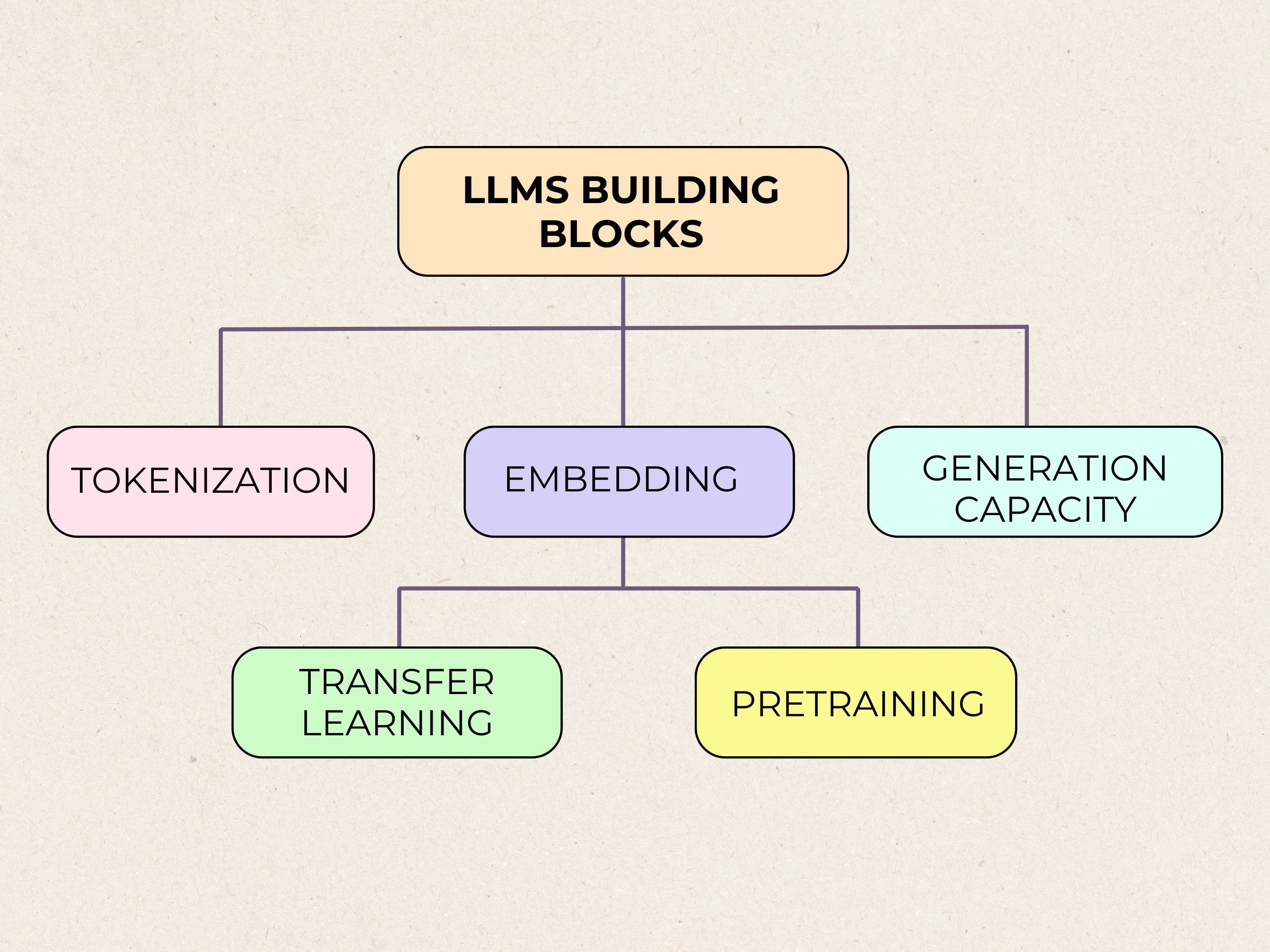Table of Contents
Large language models (LLMs) containing massive volumes of pre-trained data have enabled the astonishing emergence of generative AI. We are here now because chat-based interfaces have made AI more accessible to the general public. Anyone can use prompts in natural language to elicit questions for a predetermined or intended response thanks to the underlying LLM technology. These answers could include writing code, creating content, carrying out activities, and more. This natural language processing feature is human-like, something that was previously unattainable. Therefore, it is of utmost importance to take care of security and privacy in LLMs.
Stats about the LLM market
From 2024 to 2030, the large language model market is expected to develop at a compound annual growth rate CAGR) of 35.9%. In 2023, the market value was USD 4.35 billion. Chatbots have shown to be incredibly useful in a variety of roles, including customer service, legal case analysis, stock market recommendation engines, and even sophisticated medical case helpers. In order to complete transactions, many of these entities maintain context-sensitive interactions and sophisticated personalities.
The current generation of conversational AI is already saving hours or even days of human labor for organizations by helping them scale with everyday operations like creating invoices, automating refunds, researching intricate subjects, creating initial content, and more. The extent to which automation can be used, as well as the complexity of tasks that AI applications can perform, are starting to show their effects. AI chatbots, agents, and task handlers will become more and more commonplace due to their efficiency and cost benefits. These features make it simple to misuse client information for private discussions. It is now possible to integrate activity and logs with user cookies to enable security and privacy breaches with a single prompt. Due to the lack of data governance rules for Privacy in LLMs, it is relatively easy for a hostile actor to seek and obtain sensitive information about a person or business.
Convert Text Into Intelligence With Large Language Model Development
Some of the Most Popular LLMs
Here are a few of the most recent and relevant large language models. They process natural language and have an impact on future model architecture.
BERT
Google unveiled the BERT family of LLMs in 2018. Change of data sequences into different data sequences is possible using the transformer-based BERT paradigm. BERT has 342 million parameters and is designed as a stack of transformer encoders. BERT was first trained on a big corpus of data, and it was subsequently refined to carry out particular functions including sentence text similarity and NLP tools. It was applied to enhance the comprehension of queries in the Google search version released in 2019.
Claude
The centerpiece of the Claude LLM is constitutional AI, which modifies AI outputs according to a set of guidelines to make the AI assistant it powers accurate, safe, and helpful. Anthropic was the firm that invented Claude. Claude 3.0 is the most recent version of the Claude LLM.
Ernie
The Ernie 4.0 chatbot is powered by Baidu’s large language model, Ernie. Since its August 2023 launch, the bot has amassed almost 45 million users. There are rumors that Ernie has ten trillion parameters. Although it can speak other languages, Mandarin is where the bot performs best.
Falcon 40B
The Technology Innovation Institute created the Transformer-based, Causal Decoder-Only model Falcon 40B. It was trained using English data and is publicly available. There are two more compact versions of the model that it offers : Falcon 1B and Falcon 7B (1 billion and 7 billion parameters). Falcon 40B is now accessible on Amazon SageMaker. You may get it for free on GitHub as well.
Gemini
Google’s Gemini LLM family is responsible for the company’s Gemini chatbot. The chatbot, which was renamed from Bard to Gemini after the model transition, was powered by the model instead of Palm. Because Gemini models are multimodal, they can process text as well as images, audio, and video. Additionally, a large number of Google goods and apps incorporate Gemini. There are three sizes available: Ultra, Pro, and Nano. The three models are Ultra, which is the biggest and most powerful, Pro, which is a mid-tier model, and Nano, which is the smallest and most effective model for on-device tasks. In most benchmark evaluations, Gemini performs better than GPT-4.
Llama
Large Language Model Llama was released in 2023, Meta’s LLM is called Meta AI (Llama). The largest version has a size of 65 billion parameters. Llama is currently open source, having previously only been accessible to authorized academics and developers. Smaller versions of Llama are available, requiring less processing power to operate, test, and conduct experiments.
GitHub, Wikipedia, CommonCrawl, and Project Gutenberg are just a few of the public data sources that Llama was trained on. Llama has a transformer architecture.
Palm
Google’s 540 billion parameter transformer-based Pathways Language Model powers Bard, its AI chatbot. It was trained using several TPU 4 Pods, Google’s proprietary machine-learning hardware. Palm excels at reasoning-based tasks like math, coding, classification, and answering questions. Palm is also the best LLM at breaking down difficult jobs into easier subtasks.
The Pathways research project at Google gave rise to the moniker PaLM, which aims to develop a single model that can be used for a variety of scenarios. Several optimized Palm versions exist, such as Sec-Palm for cybersecurity deployments to expedite threat analysis and Med-Palm 2 for life sciences and medical data.
GPT
The most recent wave of enthusiasm around AI was sparked by OpenAI’s Generative Pre-trained Transformer (GPT) models. Currently on the market are the GPT-3.5-turbo and GPT-4 versions. Many various organizations, such as Microsoft, Duolingo, Stripe, Descript, Dropbox, and Zapier, employ GPT, a general-purpose LLM with an API, to power an endless number of apps. However, ChatGPT models are arguably the most well-known example of its capabilities.
XGen-7B
Salesforce’s XGen-7B is an open-source model that works approximately as well as other models with seven billion parameters; it’s not particularly strong or well-liked. However, It’s still important to include since it shows how many big tech corporations have machine learning solutions and AI departments that are capable of creating and launching their LLMs.
StableLM and Stable Beluga
The team behind one of the greatest AI picture creators, Stable Diffusion, is called Stability AI. Though they’re not nearly as well-known as the image generator, they have also produced a few open-source LLMs based on Llama, such as Stable Beluga and StableLM.
| Model | Parameter Size |
|---|---|
| BERT | 342 million |
| Claude | Not specified (Constitutional AI) |
| Ernie | Rumored 10 trillion |
| Falcon 40B | 40 billion |
| Gemini | Varies by size (Ultra, Pro, Nano) |
| Llama | 65 billion |
| Palm | 540 billion |
| GPT | Varies by version (GPT-3.5-turbo, GPT-4) |
| XGen-7B | 7 billion |
| StableLM | Not specified |
Applications of LLMs
The real-time text generation capabilities of large language models have made them indispensable for optimizing search engines, driving virtual assistants, and boosting language translation services. There are a ton more LLM use cases; these are only a few examples. We will delve deeply into the eight best LLM applications in this part.
1. Generating content
Specialized in content creation are LLM apps. Video scripts, blog entries, marketing copy, social media updates, and articles can all be automatically generated with them. Additionally, flexible in producing material that appeals to particular target audiences, LLM-backed generative AI tools may adjust to a variety of writing styles and tones. These AI models are used by AI solution Providers in the USA and content producers to save time and effort throughout the writing process by streamlining the development of information.
2. Localization and translation
Across many language pairs, LLM AI can offer precise, context-aware translations. These models can comprehend the subtleties, idioms, and grammatical structures of many languages since they have been trained on enormous volumes of bilingual or multilingual literature. This is important for legal papers, business correspondence, and literary translations since they can preserve the original text’s intent and style.
In terms of localization, LLMs assist in modifying information for various target audiences in a culturally and contextually relevant manner, guaranteeing that the translated content is pertinent and resonates. They make the text relevant and approachable by taking into account regional measures, date formats, customs, and cultural allusions. This capacity is especially crucial in the marketing and entertainment sectors, as cultural nuance plays a major role in engagement.
3. Search and Recommendation
Natural language questions can be comprehended and processed by LLMs with previously unheard-of precision and context. These AI models, when included in search engines, can decipher the meaning behind a user’s query and provide more accurate and pertinent results. Additionally, they can provide content summaries, which facilitates users’ rapid access to the information they require.
To tailor content recommendations in recommendation systems, LLMs examine user preferences, search history, and interaction data. They can anticipate user requirements, which improves the user experience overall.
4. Virtual Assistants
Natural language understanding and processing (LLM) is at the heart of AI-powered virtual assistants. The LLM deciphers the purpose and context of a user’s request when they ask a query or provide a command. The LLM produces a suitable answer after it has ascertained the intent. In addition to learning from encounters, contemporary virtual assistants also develop over time to offer more individualized responses. They examine user input, keep track of user preferences, and adjust to each user’s particular communication style.
5. Code Development
Programmers can get help from large language models when writing, evaluating, and debugging code. Based on simple descriptions, these models can construct full functions, suggest completions, and interpret and generate code snippets. When a developer writes a comment such as “sort a list of numbers in ascending order,” for example, the LLM can supply the relevant code. Moreover, LLM AI can translate code between several programming languages, which facilitates the transition of projects to a new language or the ability for engineers to deal with unfamiliar syntax.
6. Sentiment Analysis
The market for sentiment analytics is expected to increase at a compound annual growth rate (CAGR) of 18.4% from 2021 to 2028, reaching $7.5 billion. Because large language models have a comprehensive awareness of context and language nuances, they can be applied to sentiment analysis. They can fairly effectively ascertain the sentiment of texts, from social media posts to consumer reviews because their training is on large datasets. Classifying the text into positive, negative, or neutral categories—often with corresponding confidence scores—is how LLM apps operate. For example, large language models can identify particular feelings or opinions about goods or services while analyzing client feedback. This makes it possible for companies to acquire insightful knowledge on client satisfaction and adjust their plans as necessary.
7. Market analysis
Large Language models obtain deep insights into the trends, interests, and behavior of consumers. In addition to predicting market trends and analyzing client feedback, they can also create reports that distill complex data into useful insights.
An LLM, for example, might assess hundreds of product reviews to identify the most valued attributes or often voiced grievances, helping businesses with product development and marketing tactics.
LLMs conduct comprehensive research on competitors about certain goods or services. They can monitor the development of trends, measure their performance against that of rivals, and offer innovative and strategic positioning ideas.
8. Education
Increasingly, LLM AI applications are being employed in education to offer tutoring and personalized instruction.
LLMs can provide personalized explanations and feedback based on each student’s unique learning style and speed. For example, a model can produce interactive reading materials that change in difficulty according to the comprehension level of the learner or offer real-time language translation to help international students.
Like online tutors, LLMs can respond to inquiries from students, walk them through the process of solving problems, and even inspire them with positive words.

Security and Privacy in LLMs: Challenges and Risks
Data Overfitting and Leakage:
Overfitting training data might result in unintentional information disclosure, which is one of the major AI implementation challenges when using LLMs. Large language models are trained using a variety of datasets that are collected from many websites, some of which may contain private information. Sensitive or private information is exposed if the model inadvertently includes bits of data from its training set while creating text.
Bias in Language Models:
The persistence of unjust viewpoints found in the training data is a significant additional worry. During training, LLMs absorb knowledge from a wide range of texts. If there is data bias, the model may generate results that are biased. Because the generated information could reflect and perpetuate societal prejudices already in place, there is a risk to Privacy in LLMs.
Differential Privacy and Robustness:
One of the most important concepts in ensuring that an LLM’s activities do not divulge sensitive information about specific training data points is differential privacy in LLMs. Differential privacy establishes a privacy buffer by adding noise during training, which makes it difficult for adversaries to infer particular information about each training set data.
Safe Deployment and Access Controls:
More privacy and security issues arise during the deployment stage. Typically, the integration of LLMs is into a variety of programs, and users can access their outputs via Application Programming Interfaces (APIs). To ensure the model is secure, strong access, encryption, and authentication measures are there to stop misuse and illegal access. In addition, customizing models for particular domains and use cases improves their functionality and lowers the possibility of inadvertent data exposure. To guarantee that just persons with permission may access and utilize their models in predetermined manners, organizations ought to impose rigorous controls on them.
Federated Learning to Preserve Privacy:
Federated learning shows promise as a method for coping with AI bias and training large language models while protecting users’ data. The training of models is on user devices in this decentralized learning paradigm, and only model updates are sent to a central server. By doing this, the central model is exposed to fewer sensitive user details, increasing privacy in LLMs.
Best Ethical Practices for Ensuring Privacy in LLMs & Its Development
Privacy in LLMs and security threats need to be addressed with a methodical strategy and careful procedures. The best practices for Ethics in AI are:
- Safe Data Management and Model Training. It is essential to secure the training data and the model. To lower the risk of unwanted access and data breaches creating security loopholes, preventing this entails protecting the model architecture, training pipeline, and data repositories in addition to putting encryption and access controls in place.
- Frequent testing and auditing for bias and vulnerabilities. Regular testing and auditing are necessary to maintain the objectivity and security of LLM outcomes. Aligning LLMs with ethical standards can be accomplished by the use of tools and procedures that assess the model’s behavior, identify biased outputs, and address problems.
- Setting Up Robust Access Controls. A crucial part of Privacy in LLMs and security is access controls. Limiting the possibility of unauthorized use by putting in place role-based access controls, authentication methods, and authorization regulations also extends to preventing abuse of API access.
- Response plans and ongoing monitoring. Privacy in LLMs and security is a continuous endeavor. For security teams to react quickly to new threats and implement remedial measures, continuous monitoring is essential for identifying anomalies and possible security breaches.
- Informed consent. It is morally required to acquire informed permission before employing Privacy in LLMs in cybersecurity. Customers must have the option to confirm the usage of their data or if they want the deletion of acquired data.
- Adherence to regulatory requirements. To guarantee that LLMs are used in a way that respects individual rights and data privacy, compliance with data protection legislation is both a technical requirement and an ethical duty.
Regulatory Compliances for Privacy in LLMs
The majority of current regulations and LLM compliance about AI originate from legislation that, while not specifically intended for Ethics in AI, nevertheless has an impact on its applications. The EU’s GDPR, which went into force in 2018 and imposes several rules about data security and privacy, is one important piece of legislation. For training and operational purposes, AI models heavily depend on data, hence the GDPR has significant implications for AI in security.
For instance, the GDPR contains a clause that gives right to people to release their personal data. Because of this, a company that trains its AI models using the personal data of its consumers must make sure that it can erase data connected to particular customers upon request.
The California Privacy Rights Act (CPRA), which became fully operative in 2023, is another LLM compliance. The CPRA has provisions mandating that certain companies notify consumers when they utilize algorithms to generate automated decisions about individuals. Regulators of the CPRA are now debating how to interpret and implement that rule about artificial intelligence and machine learning. Businesses covered by the CPRA most likely have to disclose whenever they use AI to make decisions that have an impact on people, at the very least.
Case studies
Applications for large language models in a variety of industries are common large language model (LLM) use cases, demonstrating its adaptability and potential to improve productivity and decision-making.
Healthcare
Healthcare is an active testing ground for AI-based automation solutions due to rising healthcare costs, administrative burdens, and workforce shortages. LLM application cases in healthcare, in particular, hold the potential to revolutionize clinical practice by enabling healthcare professionals to spend more time with their patients.
This is where LLMs have presented a strong argument:
- Back-office automation: By writing appeal letters, expediting patient data input, and classifying incoming claims and billing, Gen AI models can relieve healthcare workers of administrative burdens.
- Assistance for patients: LLM-based chatbots and virtual assistants can help patients with ambulatory care, medication scheduling, monitoring health indicators, and meeting their communication needs.
- Automated compliance management: Generative AI development services can help compliance managers monitor changes in regulations and assess their risks.
- Assistance with medical diagnosis: Language models can assist with medical diagnosis by assessing patient symptoms based on the examination of medical records, in addition to automating mundane chores.
- Clinical trials: By training on unprocessed protein sequences, the AI learns to deduce the structures of molecules and proteins.
Finance and banking
In April 2023, Bloomberg unveiled its GPT-based tool, trained on and specifically created for financial data, making language models a noticeable presence in the banking industry. The tool allows for quick, precise, and simple financial analysis by outperforming comparable LLMs by large percentages. In addition to financial data analysis, chatbots, effective onboarding of new clients, individualized trading support, and market forecasting are examples of Gen AI LLM business application cases in finance. Additionally, the analytics engine of LLMs facilitates intelligent wealth management and reports at scale. Morgan Stanley, for instance, has presented a strong argument in favor of LLM-driven financial analysis. In just a few minutes, financial advisors may now quickly and efficiently sift through a vast collection of financial data thanks to the financial services company’s new generation artificial intelligence (AI) assistant.
Retail and e-commerce
Extensive language models have demonstrated AI’s potent ability to retrieve product and asset information. Retail and e-commerce, more than other businesses, stand to gain the most from the unparalleled search capabilities of gen AI because of their vast inventory of SKUs, product descriptions, and marketing efforts. Specifically, LLMs excel in autonomously extracting pertinent data from custom feedback categories, attitudes, and demographic and behavior data. It doesn’t stop there, either. Customer support systems with Gen AI LLM enhancements increase sales, enhance user satisfaction, and provide round-the-clock assistance to clients. Procurement management was included in the language models’ retail application domain. LLMs can forecast future product demand and cut down on stockouts and surplus inventory by analyzing seasonality data and customer behavior.
Education
One area where a customized strategy is essential to boost productivity and promote more learner engagement is learning & education. LLMs can introduce new approaches to personalized learning by establishing a distinctive conversational setting. In this every program, test, and quiz is tailor-made to the needs, interests, and learning preferences of each student. The model can also act as a force multiplier for educators by assuming mundane responsibilities. These include creating lesson plans and marking assignments. At a higher level, through removing language barriers and offering multilingual education, LLMs support inclusive, fair learning opportunities for students from all backgrounds. Additionally showcasing the enormous potential of LLMs in language learning and translation are apps like Babbel and Duolingo.
Entertainment and media
For the creative sector, generative AI services have also created new avenues for growth. In addition to generating textual data, multimodal LLMs can produce unique audio and short-form movies. Also, they can enhance editorial processes, and adjust any kind of information to fulfill target audience needs. In advertising or gaming, they can also enable interactive storytelling to take the viewer on a personalized and interesting journey.
Automobile
Recently, to further enhance voice control, car infotainment systems also have language models. There were enhancements in voice control systems by Mercedes-Benz, the undisputed leader in automotive technology. They built a GPT-powered model to boost natural language comprehension and reaction times.
In the creation of intelligent vehicles, generative AI tools can also be employed to co-develop automotive software applications, evaluate production data, and train production staff on safety procedures. Automated cars may be able to process intricate environmental data and make wise driving decisions by using language models.
Experience The Power of AI-Powered Language Solutions By Getting Our Cutting Edge Technology Solutions
Conclusion
The fight against security and privacy in LLM threats in the field of large language model (LLM) artificial intelligence systems is an ongoing one. The methods and strategies covered in this article are essential tools for strengthening Privacy in LLMs against vulnerabilities and safeguarding sensitive data, and new tactics will inevitably surface as technology develops and dangers change. Organizations confidently leverage LLMs with federated learning, encryption, access restrictions, and proactive measures. The dedication to innovation and attention to protecting LLMs in this quickly evolving field will continue to influence the generative AI development company guaranteeing their continued role as positive forces in the digital era.
Organizations using LLMs must conduct diligent risk assessments and cultivate a security-centric culture at all operational levels. This is to maintain a strong security posture and manage risks efficiently. LLM development company approaches to their management and protection must change as the range of uses for these models increases.
FAQ
How is LLM useful in business?
Based on the unique corporate LLM use cases you have, you should assess the technology’s worth and usefulness. In general, LLMs can be useful to automate analysis, simplify manual operations, and expedite the development of material. They may occasionally catalyze your business plan and innovative endeavors.
What skills do LLMs have?
LLMs are useful in a wide range of tasks. Their unparalleled capacity for language comprehension allows them to produce natural language, offer content summaries, classify content, and enhance chatbot skills. It also facilitates sentiment analysis on a large scale.
What role do LLMs play in healthcare?
LLMs have a wide range of uses in the medical field. Language models can:
- retrieve medicine names from clinical notes,
- answer questions from patients,
- handle administrative duties, and
- conclude medical data.
What retail applications does LLM have?
Language models possess remarkable capabilities. They can recognize trends in medical data, generate tailored content, and make product recommendations to clients. Chatbots that use LLM to help clients with their digital purchasing are another common application.






